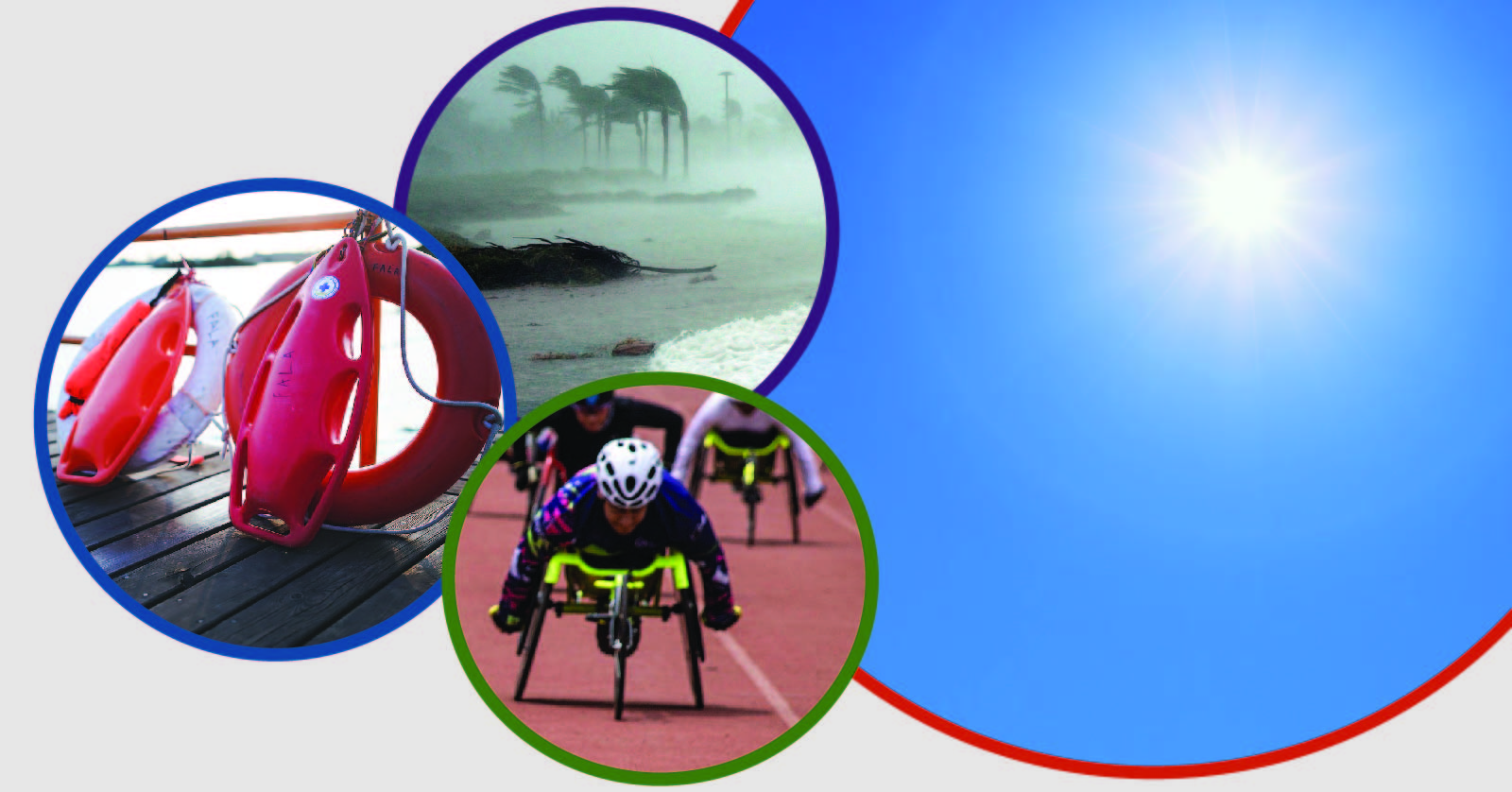
Summer’s long days and warm weather allow for more time spent outdoors, benefiting physical and mental health. Taking breaks from work to focus on leisure activities—including watching the 2024 Olympic and Paralympic Games—may help reduce stress.
While summer has many advantages, it is also a season marked by extreme heat and other natural disasters. Rates of certain accidents and injuries, such as drowning, peak during the summer. NICHD supports research that seeks to understand the impacts of climate change, prevent drownings, and help ensure safe participation in summer sports.
Understanding the Impact of Natural Disasters
The days are getting hotter. June 2024 was the 13th consecutive month to break global temperature records. High temperatures affect health in many ways, including by raising risk for pregnancy-related complications. A recent NIH-supported study found links between both short- and long-term exposure to extreme heat during pregnancy and a higher risk of developing life-threatening complications during labor and delivery. Other work has revealed connections between heat exposure and adverse infant outcomes, including low birth weight and preterm birth. An ongoing NICHD-funded study is assessing possible relationships between heat exposure and miscarriage.
Extreme heat can be a contributing factor to other natural disasters, including hurricanes. These extreme weather events can have far-reaching effects, from causing injuries and trauma to disrupting the food supply. Substantial research has focused on the short-term consequences of such disasters. One NICHD-funded study is evaluating the long-term effects of Hurricane Katrina, which struck New Orleans in 2005. Researchers are examining the extent to which residents affected by Katrina moved from one residence to another, their economic status, and their health outcomes in the decade following the disaster.
Due to their physiology and stage of development, children experience different health consequences of heat and other natural disasters, compared to adults. NICHD-funded research seeks to understand the indirect burden of natural disasters on child health—illnesses and deaths due to conditions such as compromised food security and lack of clean water.
Preventing Drownings
Drowning deaths tend to peak in the summer months. In the United States, drowning deaths increased in 2020 through 2022, compared to 2019 levels. Drowning remains the leading cause of death among children ages 1 to 4 years.
Children with autism spectrum disorder (ASD) are at much higher risk of drowning than their peers. This may be due, in part, to the tendencies of children with ASD to wander, to be fascinated by water, and to be less perceptive of danger. Swimming lessons are widely recommended to help promote water safety and prevent drownings, but little research has focused on evaluating swim instruction for children with ASD. NICHD is funding a randomized controlled trial designed to provide insights into the best strategies for teaching swimming and water safety skills to children with ASD.
This study is one of several projects awarded in response to NIH’s Notice of Special Interest to encourage and facilitate scientific discovery for drowning prevention. Another recently funded project seeks to develop and test a virtual reality environment for lifeguard training and research. Many drownings occur despite the presence of lifeguards, and better understanding the sources of these events will help guide development of targeted trainings for lifeguards. Other work strives to understand the effectiveness of state and local drowning prevention policies in reducing racial disparities in drowning rates.
Advancing Sports Medicine
Water sports are among the many athletic events being featured at the 2024 Olympic Games, with the Paralympics set to begin on August 28. NICHD works to promote physical activity and safe participation in sports for its populations of interest, including people with disabilities. Beyond the physical benefits, participating in sports can reduce anxiety and depression and enhance satisfaction with life.
Paralympic and adaptive athletes may experience unique patterns of injury and illness, as former Paralympian wheelchair racer Cheri Blauwet, M.D., discussed in a recent presentation for the National Advisory Board on Medical Rehabilitation Research. Dr. Blauwet’s research focuses on understanding the impact of community-based adaptive sports and preventing injuries among elite Paralympic athletes.
One of our current grantees, Kerri Morgan, Ph.D., at Washington University in St. Louis, is working to engage more wheelchair users in physical activity. A three-time Paralympian, Dr. Morgan is now leading a project to evaluate the effects of a community-based aerobic and strength training program on the cardiometabolic health of wheelchair users.
Through research, we can identify evidence-based strategies to help ensure active, healthy, and safe summers for all.

 BACK TO TOP
BACK TO TOP